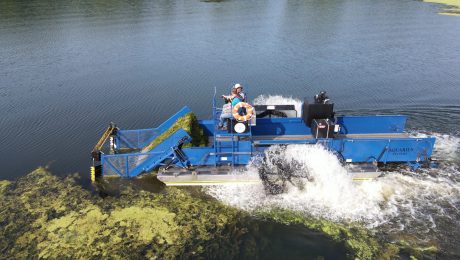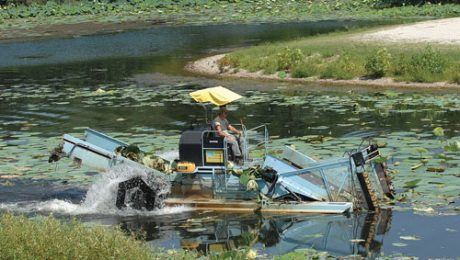A closer look at how Eurasian milfoil and chemical treatments are harming aquatic life Flint Lake on Valparaiso’s north side is in trouble. Invasive aquatic weeds, especially Eurasian milfoil, have become so overgrown that they’re even interfering with fish population surveys. During a recent Department of Natural Resources (DNR) survey, biologists had to stop two
The Iowa Great Lakes area is an incredible place to live, visit and recreate. Much of their economy is tied to these area lakes. Sometimes, difficult decisions come along, such as the curlyleaf pondweed issue on the north end of East Okoboji. It is an exotic that showed up in the 1950s, but in recent
Intensive in-lake and watershed management caused Kohlman Lake, the northernmost lake in the Phalen Chain of Lakes in Minnesota, to go from a relatively turbid to a clear water state. Aquatic plants responded to the clean waters by growing up to the surface. The change in lake state and a comprehensive water quality monitoring dataset
In the last few decades, the lake’s weedy, northern-most portion has clogged hulls and deterred boaters from entering the lake from the Oswegatchie River. Patches of weeds greet the water’s surface near every dock, and nearly invisible from a distance on a windy day, matted greenery creates a basin of weeds seven-feet-deep in some spots.
Milfoil — Beating back the invader By Rochelle Feil Wednesday, August 1, 2007 This harvest feeds no hunger, just a compost pile. The benefit from the harvest is safety and convenience for users of parks along the Columbia River in Washington: no tangled feet and easier launching for boaters. Ben Mendoza and Randy Smith, Chelan
aquatic vegetation cutteraquatic weed harvesteraquatic weed harvestersaquatic weed harvestinglake weed harvestermechanical harvestermechanical harvestersmechanical harvestingmechanical weed harvestermechanical weed harvestersmechanical weed harvestingmilfoil harvestermilfoil harvestersmilfoil harvestingweed harvestersweed harvesting
Everyone lives in a watershed whether you live close to a body of water or not. A watershed is the surrounding land that drains into a lake, stream, or river. It includes drainage systems such as ditches and storm sewers, which means you have a direct effect on water quality. As we welcome fall,
Aquatic Plant Harvesters offer an environmentally sound method of controlling excessive aquatic plant growth and nuisance vegetation in waterways of all sizes. These heavy duty work boats are highly efficient in the management of submerged, emergent and free floating aquatic vegetation. Like an underwater lawn mower, an aquatic weed harvester cuts aquatic vegetation, collecting and storing
aquatic vegetation cutteraquatic weed cutteraquatic weed harvesteraquatic weed harvestersaquatic weed harvestinglake weed harvesterlake weed harvesterslake weed harvestingmechanical harvestermechanical harvestersmechanical harvestingmechanical weed harvestermechanical weed harvestersmechanical weed harvestingmilfoil harvestermilfoil harvestersmilfoil harvestingweed harvesterweed harvestersweed harvesting
DNR “Mows” Dogwood Lake August 18, 2011 Washington Times Herald Indiana Department of Natural Resources employee Ron Hauser runs an aquatic weed harvester at Glendale Fish and Wildlife Area on Wednesday afternoon. The harvester acts as an underwater lawn mower, removing lotus pads and coontail growing in the lake.
aquatic weed harvesteraquatic weed harvestersaquatic weed harvestinglake lawn mowerlake lawn mowerslake lawn mowinglake mowerlake mowerslake weed harvesterslake weed harvestingmechanical harvestermechanical harvestersmechanical harvestingmechanical weed harvestermechanical weed harvestersmechanical weed harvestingweed harvesterweed harvestersweed harvesting







